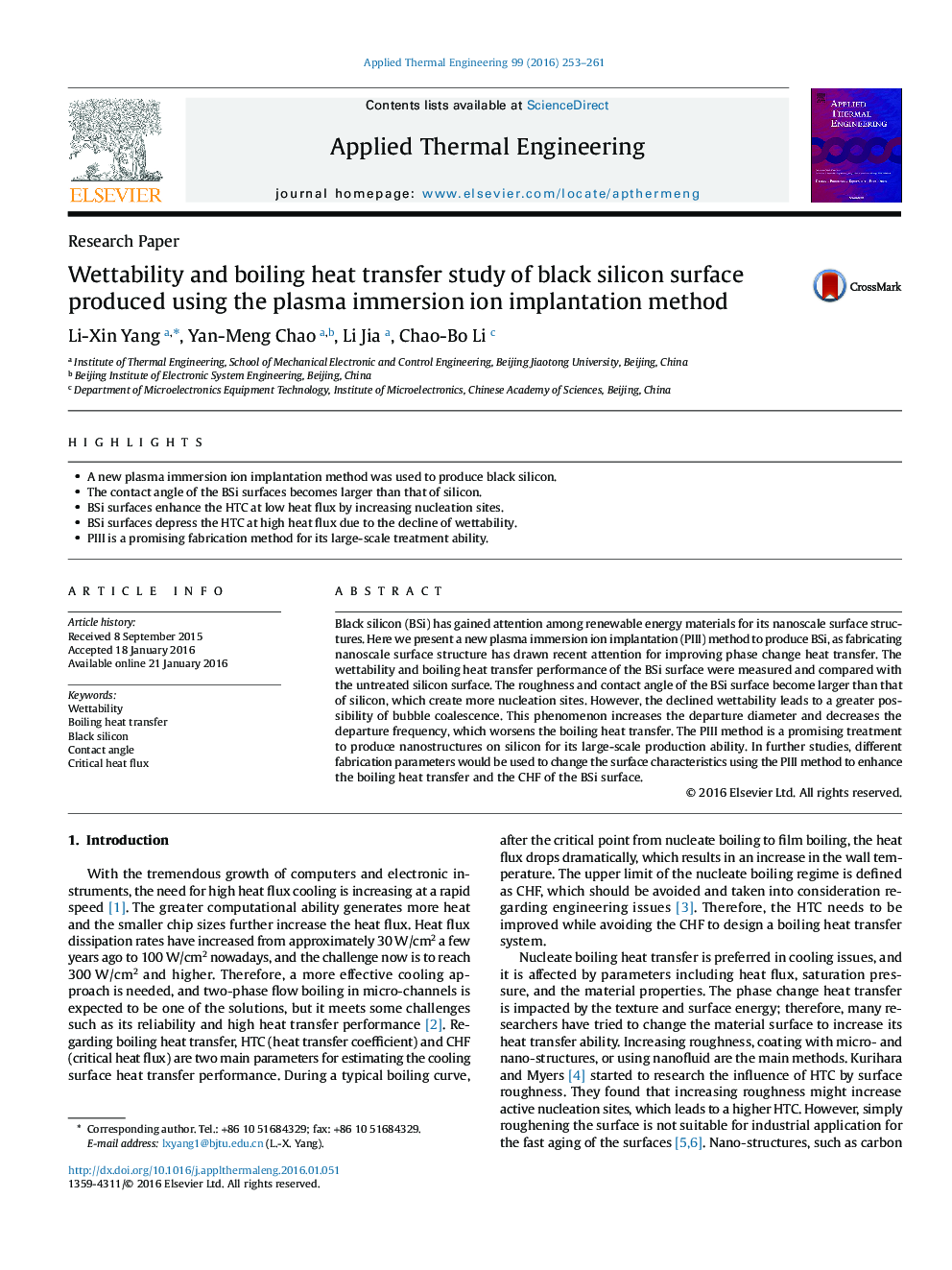| Article ID | Journal | Published Year | Pages | File Type |
|---|---|---|---|---|
| 644678 | Applied Thermal Engineering | 2016 | 9 Pages |
Abstract
Black silicon (BSi) has gained attention among renewable energy materials for its nanoscale surface structures. Here we present a new plasma immersion ion implantation (PIII) method to produce BSi, as fabricating nanoscale surface structure has drawn recent attention for improving phase change heat transfer. The wettability and boiling heat transfer performance of the BSi surface were measured and compared with the untreated silicon surface. The roughness and contact angle of the BSi surface become larger than that of silicon, which create more nucleation sites. However, the declined wettability leads to a greater possibility of bubble coalescence. This phenomenon increases the departure diameter and decreases the departure frequency, which worsens the boiling heat transfer. The PIII method is a promising treatment to produce nanostructures on silicon for its large-scale production ability. In further studies, different fabrication parameters would be used to change the surface characteristics using the PIII method to enhance the boiling heat transfer and the CHF of the BSi surface.
Related Topics
Physical Sciences and Engineering
Chemical Engineering
Fluid Flow and Transfer Processes
Authors
Li-Xin Yang, Yan-Meng Chao, Li Jia, Chao-Bo Li,
